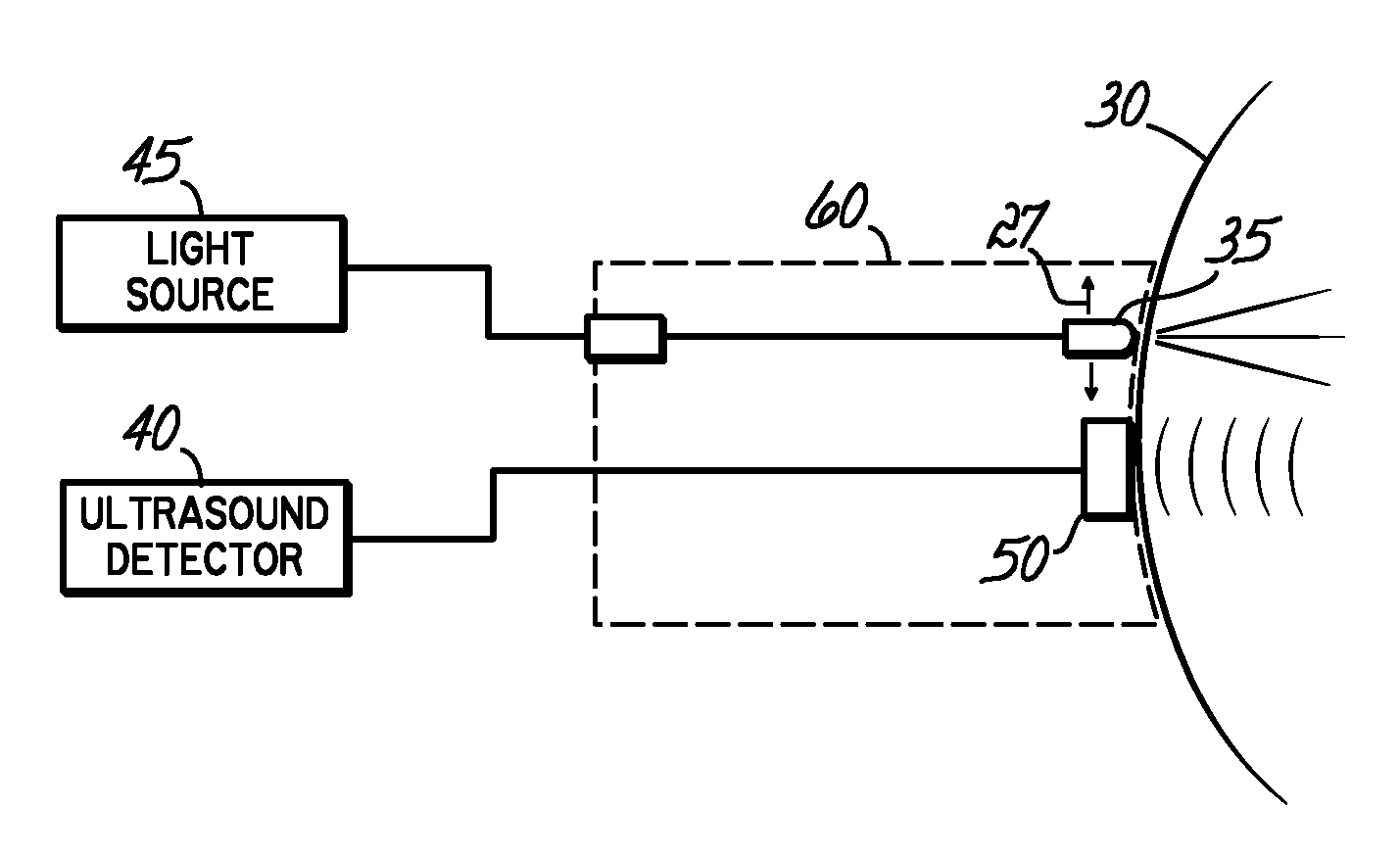Photoacoustic measurement of analyte concentration in the eye
- Summary
- Abstract
- Description
- Claims
- Application Information
AI Technical Summary
Benefits of technology
Problems solved by technology
Method used
Image
Examples
Embodiment Construction
[0028]In one embodiment of the inventive system, the glucose concentration is measured in the eye, by a photoacoustic assay such as that described in U.S. Pat. No. 6,846,288 (e.g. at col. 13 line 62 to col. 18 line 49) or in U.S. Pat. No. 6,403,904, each of which is incorporated by reference in their entirety.
[0029]In one embodiment non-glucose substances, also referred to as analytes, that are present in the eye are also measured by a photoacoustic assay. For example, photoacoustic signals for methylcobalamin and methylcobinamide of the B12 family of compounds, were measured, as described in Hung and Grabowski, J. Am. Chem. Soc. 121 (1999) 1359, which is expressly incorporated by reference herein in its entirety. These substances include, in addition to glucose and the vitamin B12 family, endogenous substances such as glycosylated hemoglobin, oxygenated hemoglobin, non-oxygenated hemoglobin, oxygen, urea nitrogen (i.e., BUN), creatinine, bilirubin and its conjugates and metabolites...
PUM
 Login to View More
Login to View More Abstract
Description
Claims
Application Information
 Login to View More
Login to View More - R&D Engineer
- R&D Manager
- IP Professional
- Industry Leading Data Capabilities
- Powerful AI technology
- Patent DNA Extraction
Browse by: Latest US Patents, China's latest patents, Technical Efficacy Thesaurus, Application Domain, Technology Topic, Popular Technical Reports.
© 2024 PatSnap. All rights reserved.Legal|Privacy policy|Modern Slavery Act Transparency Statement|Sitemap|About US| Contact US: help@patsnap.com









